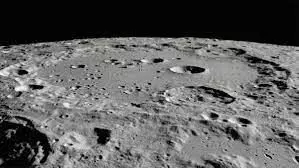
Moon inherited noble gases from Earth, Scientists find proof
text_fieldsLondon: Scientists for the first time have definitive proof that the Moon inherited indigenous noble gases of helium and neon from the Earth's mantle. This backs the popular "Giant Impact" theory that says the Moon is the result of a collision between Earth and another celestial body.
The team at ETH Zurich analysed six samples of lunar meteorites from an Antarctic collection, obtained from NASA. These meteorites had basalt rocks that formed when magma welled up from the interior of the Moon and cooled down quickly. Additional basalt layers protected rocks from cosmic rays, especially the solar wind. The cooling process itself resulted in the formation of lunar glass particles.
Experts have now found that these glass particles have retained the isotopic signatures (chemical fingerprints) of solar gases - helium and neon - from the Moon's interior. These findings support the theory that the Moon inherited noble gases indigenous to the Earth.
Researcher Patrizia Will said finding solar gases in basaltic materials from the Moon is an exciting result because this finding is unrelated to any exposure to the lunar surface.
ETH Zurich Professor Henner Busemann thinks there will now be a race to study heavy noble gases and isotopes in meteoritic materials. NASA has a vast collection of around 70,000 approved meteorites. Knowing which of these samples to study is a major step for scientists.
The rock fragments are collected from the deserts of North Africa or Antarctica, the cold desert. Since the Moon does not have the protection of an atmosphere, asteroids continually pelt its surface. Experts think that it took a high-energy impact for meteorites from the middle layers of the lava flow to be ejected.
The study published in the journal Science Advances is shedding light on how the Moon, the Earth, and other celestial bodies were formed.
Busemann added that these gases are not necessary for life but it will be interesting to know how they survived the brutal and violent formation of the Moon. It will help scientists of geochemistry and geophysics to create new models.
Noble gases like xenon and krypton are also likely to be the centre of attention even though they are harder to identify. Volatile elements like hydrogen and halogens are also expected to draw attention in lunar meteorites.
























